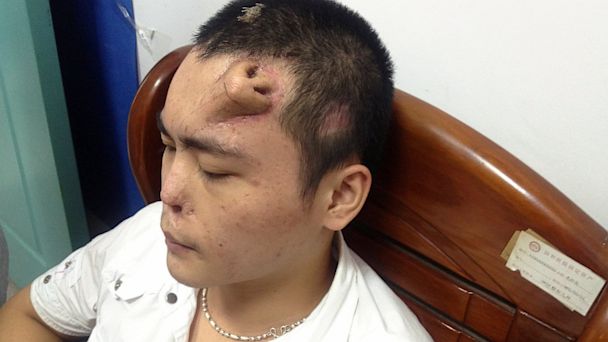Doctors Grow Nose on Man's Forehead
After a Chinese man's nose was irreparably damaged from infection, his doctors decided to "grow" a second nose on the man's forehead to replace the original nose.
The patient, identified only as Xiaolian according to Reuters, has his nose damaged from an infection following a car accident. His doctors decided the only way to reconstruct his nose was to surgically form a new one on the 22-year-old's forehead.
Doctors Grow Ear on Cancer Patient's Arm
Tissue expanders were placed under the skin and then cut to resemble a nose. According to local media, doctors expect to implant the new nose soon.
Dr. Patrick Byrne, the director of Facial, Plastic and Reconstruction Surgery at Johns Hopkins Medical Center, said forehead skin is used to help reform noses because it is the closest match to skin on the nose. However, usually the nose is reformed during surgery instead of on a patient's forehead.
"My guess would be that they felt that the tissue in the nose was so damaged they had to use the forehead skin on the interior part of the nose," said Byrne. "It'll be a real nose and [have a] breathing passage way."
Scientists Craft 3-D Ear With Printer
When the nose is transplanted, cartilage from Xiaolian's rib will be used to give the nose added structure.
Byrne said Xiaolian's new nose will be most vulnerable during the 18 months after his transplant.
"There's a lot that can happen," said Byrne. "If he gets a little infection the cartilage can disintegrate… [what looked like a nose] now looks like a blob."
However Byrne said as long as Xiaolian is able to avoid complications, his new nose should work nearly as well as his original nose.
"He should be able to smell, the smell receptors are pretty high in the nose," said Bryne.
In the future Byrne imagines that doctors will be able to grow entire ears and noses in the lab before transplant.
"[We could] take a skin sample and some cells from the patient's DNA and cartilage and use those cells to grow entire structure prior to reimplantation," said Byrne.
